
BIORHEOLOGY
Scope & Guideline
Exploring the Flow of Life's Complexities
Introduction
Aims and Scopes
- Rheology of Biological Fluids:
This includes the study of the mechanical properties and flow behavior of blood and other bodily fluids, focusing on how these properties affect physiological and pathological conditions. - Interactions of Blood Components:
Research on how different blood cells, such as erythrocytes and platelets, interact under various conditions, especially in relation to clot formation and vascular health. - Microfluidic Applications:
Utilization of microfluidic technologies to simulate blood flow and study the rheological properties of blood at a microscale, providing insights into cellular interactions and dynamics. - Pathophysiology and Clinical Relevance:
Investigation into how changes in blood rheology relate to various diseases, including diabetes, hypertension, and COVID-19, highlighting potential diagnostic and therapeutic implications. - Innovative Measurement Techniques:
Development and application of novel methodologies for assessing the rheological properties of blood and other biological materials, enhancing the understanding of fluid dynamics in biological systems.
Trending and Emerging
- Microfluidic Technologies in Hemorheology:
There is an increasing trend towards using microfluidic devices to study blood flow and rheological properties, allowing for precise control and observation of cellular interactions in a controlled environment. - COVID-19 Related Hemorheological Research:
Research addressing the effects of COVID-19 on blood rheology and coagulation has surged, reflecting the pandemic's impact on the understanding of blood-related pathologies. - Biophysical Modeling and Simulations:
Emerging studies that utilize computational fluid dynamics and other modeling techniques to simulate blood flow and predict pathological outcomes are gaining traction. - Integration of Machine Learning Techniques:
The application of machine learning to analyze and predict blood rheological behavior, including red blood cell deformability and interactions, is becoming increasingly popular. - Exploration of Non-Traditional Blood Components:
Research is expanding to include the rheological properties of non-traditional components such as extracellular vesicles and their role in health and disease.
Declining or Waning
- Traditional Hemorheology Studies:
Research focusing solely on classical hemorheological parameters without integrating newer technologies or interdisciplinary approaches is becoming less prominent. - Generalized Studies on Erythrocyte Properties:
While erythrocyte mechanics remain a core topic, studies that do not incorporate emerging technologies or novel insights into erythrocyte behavior in flow conditions are less frequently published. - Single-Factor Analyses:
Research that examines isolated factors affecting blood rheology without considering the complex interplay of multiple factors, such as biochemical and mechanical influences, is waning.
Similar Journals
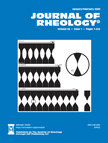
JOURNAL OF RHEOLOGY
Bridging Disciplines through Innovative ResearchJOURNAL OF RHEOLOGY, published by the SOCIETY OF RHEOLOGY, is a premier academic journal that has been disseminating significant research in the field of rheology since its inception in 1957. With a focus on the behavior of complex fluids and soft materials, this journal plays a crucial role in bridging the disciplines of Condensed Matter Physics, Materials Science, and Mechanical Engineering. Its esteemed ranking in the top quartile (Q1) of multiple categories highlights its impact, particularly in Mechanical Engineering and Mechanics of Materials. Researchers and professionals can benefit from the comprehensive studies published within its pages, which combine theoretical insights with practical applications in diverse industries. Although it does not offer open access, the journal remains a vital resource for those seeking cutting-edge developments and discussions in rheology. The editorial office is located in Japan, under the guidance of Ralph H. Colby at Pennsylvania State University, ensuring a strong academic foundation and international collaboration. The JOURNAL OF RHEOLOGY continues to shape the future of rheological research, making it an essential part of any scholar's library.

Petrophysics
Unveiling Insights for a Sustainable Energy FuturePetrophysics, an esteemed journal published by the Société des Pétrophysiciens et des Analysts de Forage (SPWLA), serves as a vital platform for sharing groundbreaking research in the interconnected fields of energy, geotechnical engineering, and engineering geology. With its ISSN 1529-9074, this journal has progressively established itself within the academic community, evidenced by its ranking in the Q3 category for both Energy (miscellaneous) and Geotechnical Engineering and Engineering Geology as of 2023. Researchers and professionals can contribute to and benefit from the collective insights shared within its pages, fostering advancements in petrophysics that are crucial for addressing contemporary energy challenges. While it does not currently offer open access, the journal remains pivotal in disseminating valuable findings from 2000 to 2012 and more recently from 2017 to 2023, driving innovation within a global context from its base in Houston, Texas. Engage with Petrophysics to explore and contribute to the ever-evolving landscape of energy and geotechnical research.
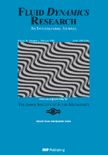
FLUID DYNAMICS RESEARCH
Unveiling the Complexities of Fluid BehaviorFLUID DYNAMICS RESEARCH, published by IOP Publishing Ltd, is a pivotal journal dedicated to advancing the understanding of fluid dynamics through interdisciplinary research that spans several domains including mechanical engineering and physics. With an ISSN of 0169-5983 and E-ISSN 1873-7005, this journal provides a vital platform for researchers aiming to disseminate new findings and theoretical advancements in fluid flow and transfer processes. As of 2023, FLUID DYNAMICS RESEARCH holds a commendable position within the academic community, ranked Q3 in fluid flow and transfer processes, mechanical engineering, and miscellaneous physics and astronomy categories. The journal showcases a diverse array of articles that not only inspire collaboration among professionals and students but also ensure that theoretical and experimental studies are accessible for further development in the field. Operating from the United Kingdom, the journal offers a unique opportunity for scholars worldwide to contribute to the vibrant community dedicated to understanding the complexities of fluid dynamics, even as it anticipates converging its years of research from 1986 to 2024.

RHEOLOGICA ACTA
Fostering Innovation in Material CharacterizationRHEOLOGICA ACTA, established in 1958 and published by Springer, is a premier journal dedicated to advancing the understanding of rheological behavior in materials. With an impressive impact factor reflected in its Q2 rankings across multiple disciplines, including Condensed Matter Physics, Materials Science, and Mechanics of Materials, this journal serves as an essential resource for researchers, professionals, and students alike. As a key publication in its field, RHEOLOGICA ACTA disseminates high-quality research articles, reviews, and case studies that contribute to the understanding of complex fluid behavior and material properties. Though it operates under a subscription model, the depth and breadth of the content it provides ensures that it remains a vital part of the academic dialogue surrounding materials science and engineering. For those seeking to deepen their expertise, RHEOLOGICA ACTA is indispensable, fostering innovation and progress in the ever-evolving landscape of material characterization and application.

APPLIED RHEOLOGY
Unlocking the Secrets of Material BehaviorApplied Rheology, published by De Gruyter Poland Sp. z o.o., is an esteemed open access journal dedicated to the field of rheology, the study of material flow and deformation. Established in 1996 and transitioning to open access in 2019, this journal serves as a vital resource for researchers, professionals, and students in both Condensed Matter Physics and Materials Science. With its current impact factor reflecting a Q3 quartile ranking in two categories as of 2023, Applied Rheology consistently publishes high-quality research that advances our understanding of material behaviors across various applications. Located in Germany and accessible online, the journal aims to foster collaboration and innovation in rheological studies by providing a platform for groundbreaking research and discussion. The utilization of open access options ensures that cutting-edge findings are readily available to a global audience, further solidifying the journal's importance in the scientific community.
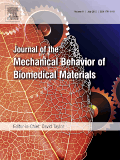
Journal of the Mechanical Behavior of Biomedical Materials
Elevating Knowledge in Biomaterials and Mechanical EngineeringJournal of the Mechanical Behavior of Biomedical Materials is a leading academic publication dedicated to the intersection of mechanical engineering and biomedical innovation. Published by ELSEVIER in the Netherlands, this journal, which holds a solid presence within Q2 in Biomaterials and Biomedical Engineering, and Q1 in Mechanics of Materials as of 2023, features high-impact research with a measurable Scopus ranking that places it in the top tier of its fields. With an impressive percentile performance—82nd in Mechanics of Materials and 73rd in Biomedical Engineering—this journal serves as a vital resource for researchers, students, and professionals seeking to enrich their understanding of the mechanical behaviors of biomaterials and their applications. Spanning converged years from 2008 to 2024, it provides access to a wealth of pioneering research that advances the knowledge essential for the development of innovative biomedical applications. Engage with cutting-edge studies and broaden your expertise in the rapidly evolving realms of biomaterials and biomedical engineering through this authoritative publication.
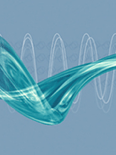
Annual Review of Fluid Mechanics
Charting New Territories in Fluid ResearchThe Annual Review of Fluid Mechanics, published by Annual Reviews, is a premier journal in the field of fluid mechanics, dedicated to advancing our understanding of fluid behavior through comprehensive and critical reviews of contemporary research. With an impressive impact factor that reflects its stature—ranking Q1 in Condensed Matter Physics and positioned 4th out of 434 in Scopus’s Physics and Astronomy category—it stands as a vital resource for researchers, professionals, and students alike. Since its inception in 1970, the journal has provided vital insights and synthesized knowledge that drive innovations and applications across various scientific disciplines. Although it does not offer open access, the journal ensures rigorous editorial standards and captivating content that contributes meaningfully to the academic discourse in fluid dynamics. Published annually, the Annual Review of Fluid Mechanics continues to be a cornerstone for anyone interested in the complexities of fluid movement and its implications in both theoretical and practical contexts.
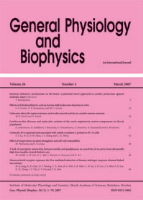
GENERAL PHYSIOLOGY AND BIOPHYSICS
Bridging Biological Systems with Physical PrinciplesGENERAL PHYSIOLOGY AND BIOPHYSICS, published by AEPRESS SRO, is a pivotal journal in the fields of biophysics and physiology, dedicated to advancing knowledge and fostering research in these increasingly vital disciplines. Established in 1983 and set to converge in 2024, the journal provides a platform for scholarly articles that explore the intricate relationships between biological systems and physical principles. Its current category quartiles include Q3 in Biophysics and Q4 in Physiology, demonstrating a growing influence among researchers, with current Scopus ranks reflecting its commitment to quality and relevance. Despite not being an open-access publication, the journal remains a valuable resource for professionals and students aiming to stay informed on the latest discoveries and methodologies. By supporting interdisciplinary research and innovation, GENERAL PHYSIOLOGY AND BIOPHYSICS plays a crucial role in shaping the understanding of complex biological interactions and applications in medicine.

Biophysics and Physicobiology
Connecting Physical Principles to Biological InnovationsBiophysics and Physicobiology, published by the BIOPHYSICAL SOC JAPAN, is a critical open-access platform that has been advancing the fields of biophysics, biochemistry, and related disciplines since its inception in 2015. With an E-ISSN of 2189-4779, the journal aims to disseminate high-quality research articles that explore the intricate interplay between physical principles and biological systems. While it holds a commendable Q3 ranking in categories such as Biochemistry and Biophysics, it continues to strive towards enhancing its contribution to scientific knowledge. Operating under an open-access model since 2017, the journal ensures that research findings are readily available, fostering collaboration and innovation. The journal welcomes submissions that enrich the understanding of molecular mechanisms and physiological processes, making it an essential resource for researchers, professionals, and students alike.

Fluid Dynamics
Pioneering insights in mechanical and fluid phenomena.Fluid Dynamics is a distinguished journal that has been at the forefront of research in the field of fluid flow and transfer processes since its inception in 1966. Published by MAIK NAUKA/INTERPERIODICA/SPRINGER, this journal serves as a valuable platform for engineers, scientists, and researchers dedicated to advancing the understanding of mechanical and fluid dynamic phenomena. With a Q3 ranking in key categories such as Fluid Flow and Transfer Processes, Mechanical Engineering, and Physics and Astronomy, Fluid Dynamics holds a significant position in the academic community, attracting submissions that push the boundaries of knowledge and application. Although it does not currently offer open access options, the journal is recognized for its robust editorial standards and impactful contributions to the field, making it essential reading for anyone involved in fluid dynamics research. Given its consistent publication through to 2024, Fluid Dynamics continues to inspire innovation and collaboration in an ever-evolving scientific landscape.